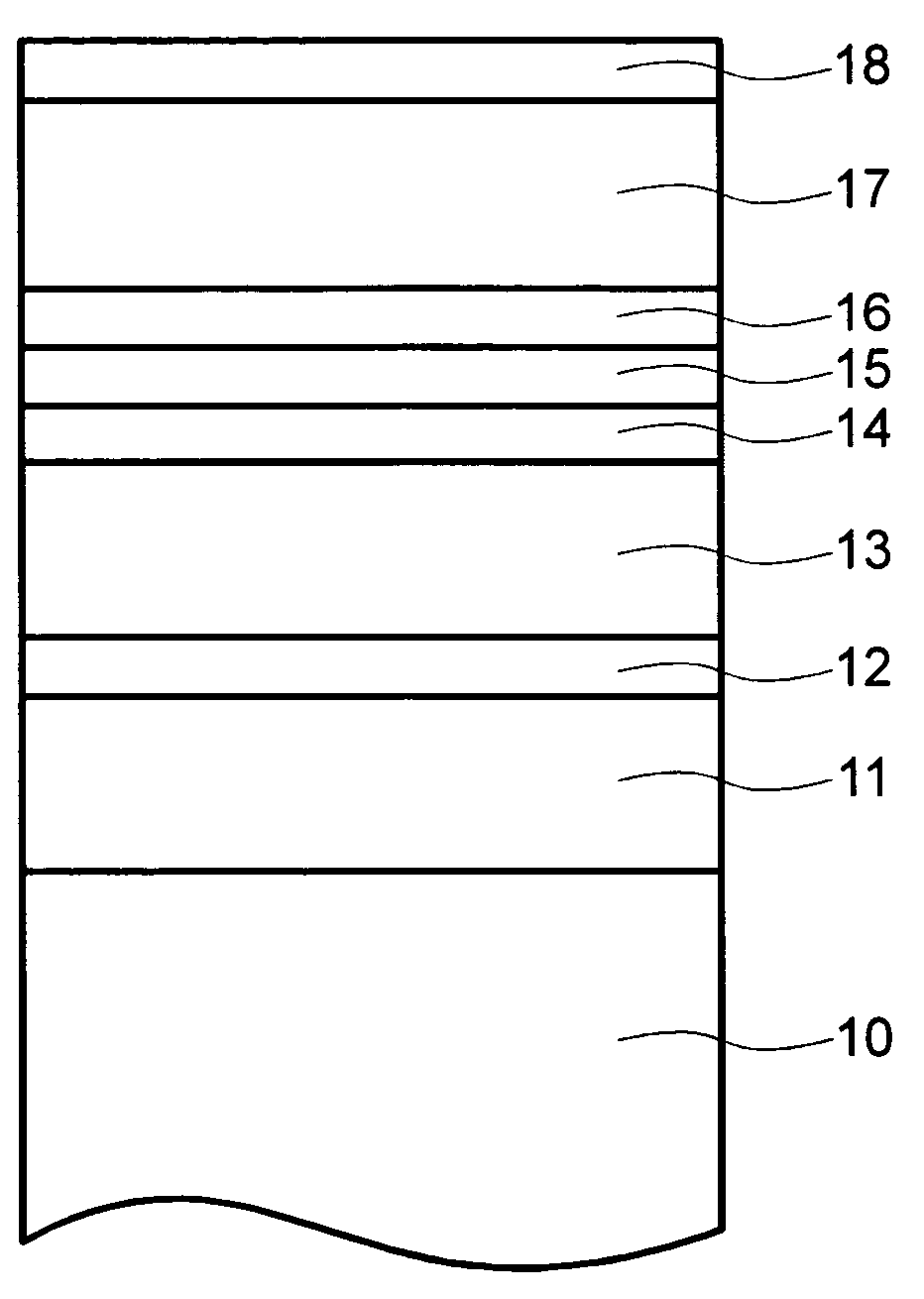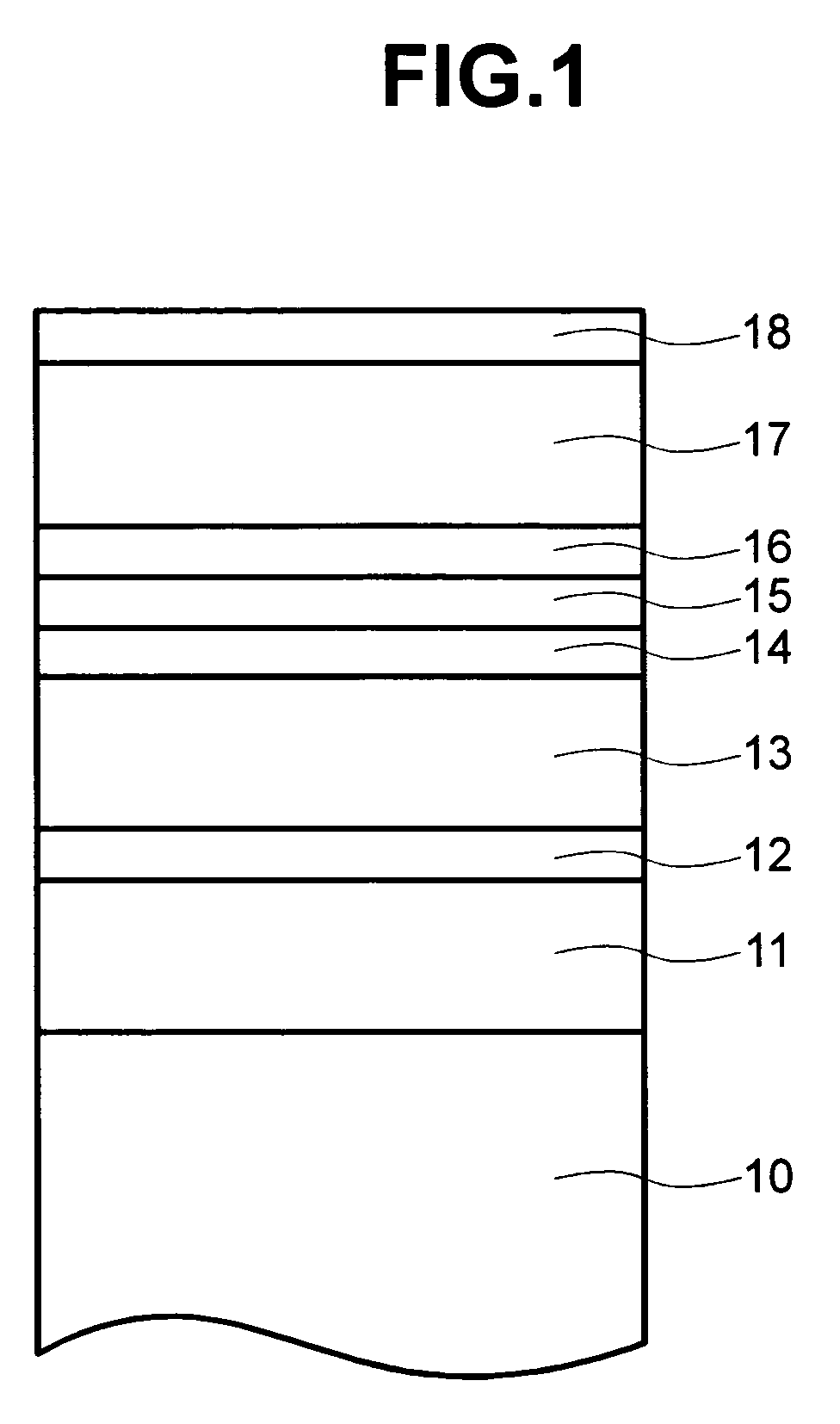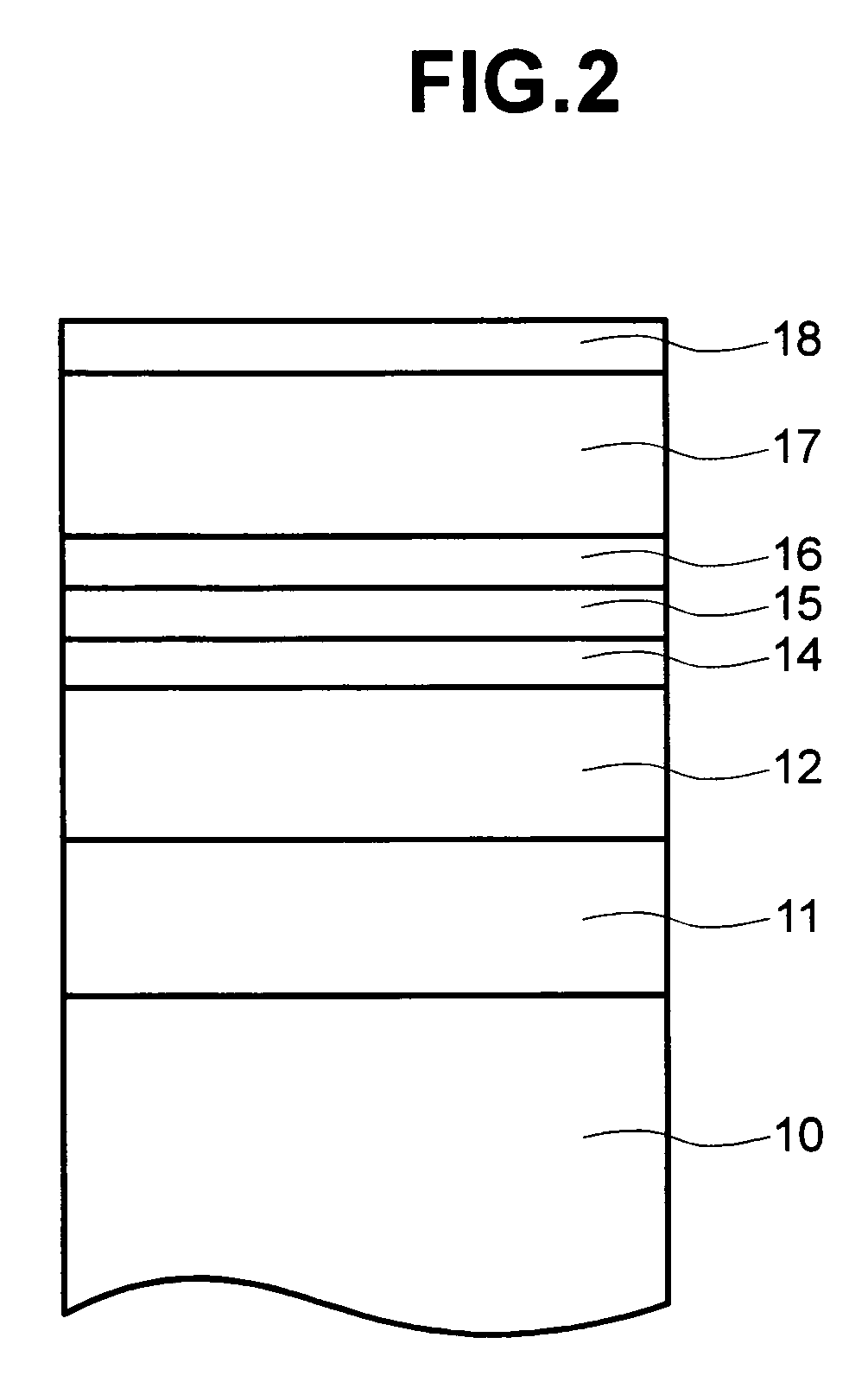Magnetic recording medium
- Summary
- Abstract
- Description
- Claims
- Application Information
AI Technical Summary
Benefits of technology
Problems solved by technology
Method used
Image
Examples
example 1
[0040]Experiments were performed to find out the optimum combination for the first seed layer and second seed layer. FIG. 2 is a sectional view of longitudinal magnetic recording media used for the experiments. The layer structures of the media are described below. Each of the layers was formed by DC magnetron sputtering using the so-called single-wafer sputtering apparatus, which is capable of forming each of the layers in individual sputtering chambers. Ar was used as the main sputtering gas.
[0041]A first seed layer 11 composed of Ti and 52% atomic weight of Al (TiAl0.25) and having a thickness of 30 nm was formed on a glass substrate 10 having an outer diameter of 65 mm. Then, after heating a surface of the first seed layer 11 with an infrared ray lamp to 300° C., a second seed layer 12 having a thickness of 30 nm was formed. In this case, material of the second seed layer was changed for each of the media. A second underlayer 14 composed of Cr and 20% atomic weight of Mo (CrMo0....
example 2
[0058]A layer structure of a medium of this example is now described with reference to the sectional view of FIG. 1. A first seed layer formed of Cr, 35% atomic weight of Ti, and 10% atomic weight of Ta first seed layers 11 was formed on a glass substrate 10 having an outer diameter of 65 mm. The thickness of the first seed layer was changed for the experiments. A surface of first seed layer 11 was heated with an infrared ray lamp with its power set to 2.18 kW, and then a Cr second seed layer 12 having a thickness of 5 nm was formed on first seed layer 11. On the second seed layer, a Co, 25% atomic weight of Al, and 25% atomic weight of Ti was used as a first underlayer 13 having a thickness of 30 nm and a composition of Cr and 20% atomic weight of Mo was used as a second underlayer 14 having a thickness of 5 nm were formed in this order. Formed on the second underlayer 14 was a composition of Co, 14% atomic weight of Cr, and 4% atomic weight of Pt as a lower magnetic layer 15, a Ru...
PUM
 Login to View More
Login to View More Abstract
Description
Claims
Application Information
 Login to View More
Login to View More - R&D
- Intellectual Property
- Life Sciences
- Materials
- Tech Scout
- Unparalleled Data Quality
- Higher Quality Content
- 60% Fewer Hallucinations
Browse by: Latest US Patents, China's latest patents, Technical Efficacy Thesaurus, Application Domain, Technology Topic, Popular Technical Reports.
© 2025 PatSnap. All rights reserved.Legal|Privacy policy|Modern Slavery Act Transparency Statement|Sitemap|About US| Contact US: help@patsnap.com



